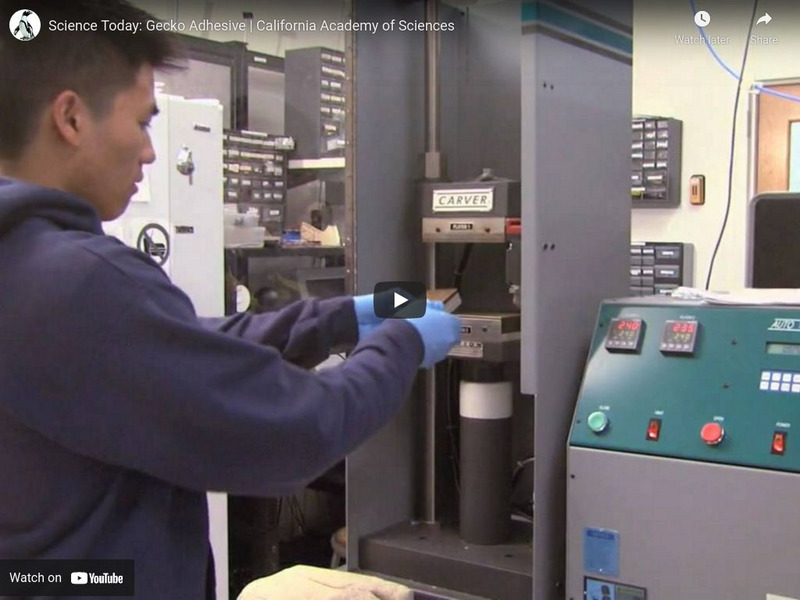Hi, what do you want to do?
California Academy of Sciences
California Academy of Sciences: The Discovery of a New Carnivorous Plant
Dr. Peter Fritsch, Curator, Department of Botany at the California Academy of Sciences, describes how over the period of 10 years he and colleagues discovered the first carnivorous plant species known to trap and digest worms underground...
California Academy of Sciences
California Academy of Sciences: The Franciscan Manzanita
Protecting a small native plant, once thought to be extinct, proves to be tricky business.
California Academy of Sciences
California Academy of Sciences: The Future of Biofuels
The future of biofuel technologies needs to take a whole-picture approach. [3:23]
California Academy of Sciences
California Academy of Sciences: Thinking With Your Gut
The bacteria in our guts may influence our behavior and emotions. [1:45]
California Academy of Sciences
California Academy of Sciences: Understanding Viruses
Studying the evolutionary history of viruses Shannon Bennet is facinated by the life history of parasitism. Where do these Viruses occur in nature, how many of them are there, and how do they switch into new hosts?
California Academy of Sciences
California Academy of Sciences: Valley Oaks
Valley oaks are a rich part of California's history. Can re-oaking make them part of our future?
California Academy of Sciences
California Academy of Sciences: Viewing the Transit of Venus
See the last Transit of Venus event; the next one won't occur until 2117!
California Academy of Sciences
California Academy of Sciences: Water on the Moon
NASA confirms that the LCROSS satellite detected water on the moon. [1:39]
California Academy of Sciences
California Academy of Sciences: What Killed King Tut?
A diverse group of scientists recently solved the 3000 year-old case of how King Tut died. [1:39]
California Academy of Sciences
California Academy of Sciences: New Mammal Discovery Sengis (Elephant Shrews)
Academy research associate Galen Rathbun describes why sengis (also known as elephant-shrews) are extreme animals. [2:21]
California Academy of Sciences
California Academy of Sciences: Wise Surveys the Skies
See how NASA's WISE mission completed its first survey of the entire sky. [2:25]
California Academy of Sciences
Ca Academy of Sciences: Collecting Corals
Steinhart Aquarium biologists are shown collecting small cuttings of coral fragments on the California Academy of Sciences 2011 Philippine Biodiversity Expedition. These fragments were legally exported from the Philippines and brought...
California Academy of Sciences
Ca Academy of Sciences: Giant Pacific Octopus
Our biologist, Nancy Levine, provides a close-up encounter with our giant Pacific octopus (Enteroctopus dofleini). [0:24]
California Academy of Sciences
Ca Academy of Sciences: Cow Power
Why not use micro-organisms (bacteria, viruses, fungus, etc.) to create sustainable energy and fuel? There are a lot of ideas currently being researched and put to use including turning cow manure into natural gas. [4:43]
California Academy of Sciences
Ca Academy of Sciences: Falcon 9 Takes Off!
With the successful launch of Falcon 9 on June 4, 2010, Space-X began its move into commercial space flights. This article helps us understand what the change from NASA-controlled space flight to commercial flights might mean.
California Academy of Sciences
Ca Academy of Sciences: Kepler's Planets
The Kepler mission is changing the way we think about exoplanets. [2:19]
California Academy of Sciences
Ca Academy of Sciences: Behind the Scenes: The Academy's Osher Rainforest
Meet the hardworking biologists who make the California Academy of Sciences' living rainforest exhibit thrive. [5:13]
California Academy of Sciences
Ca Academy of Sciences: Sea Nettle Jellyfish
Sea nettle jellyfish (Chrysaora fuscescens) are common along the Pacific coast in fall and winter. They sometimes congregate in huge swarms. Here's a glimpse at our sea nettle tank in the Steinhart Aquarium at the Academy. [0:59]
California Academy of Sciences
Ca Academy of Sciences: Lemondrop
Lemondrop, a bright yellow 15 ft (4.4 m) male albino reticulated python, gets a physical exam before being introduced to his new home at the Academy. The snake lacks the dark pigment melanin necessary for normal coloration; lack of...
California Academy of Sciences
Ca Academy of Sciences: Dr. Jack Dumbacher: Papua New Guinea
Dr. Jack Dumbacher, Curator of Birds and Mammals at the California Academy of Sciences, talks about his field expeditions to Papua New Guinea. Some of the best discoveries in science are completely serendipitous. Dr. Dumbacher...
California Academy of Sciences
Ca Academy of Sciences: Bio Inspiration: Gecko Adhesive
Bio-inspiration is when engineers and scientists look to nature for ideas. Locally, researchers at UC Berkeley are developing an uber-adhesive based on a gecko's feet. [3:44]
California Academy of Sciences
Ca Academy of Sciences: Freshwater Stingrays
Academy biologist Brooke provides a behind the scenes look at freshwater stingrays (Potamotrygon species). These stingrays typically inhabit fresh waters of South America and diet on fishes and small invertebrates. Like their saltwater...
California Academy of Sciences
Ca Academy of Sciences: Paddlefish Feeding
American paddlefish typically live in the Mississippi River and feed primarily on zooplankton, but also feed on crustaceans and bivalves. Find out more about the species as Academy Biologist Jim provides a behind the scenes look during a...
California Academy of Sciences
Ca Academy of Sciences: Mobile Microscope
Researchers at UC Berkeley have developed a microscope that fits on your cell phone. [1:07]




























